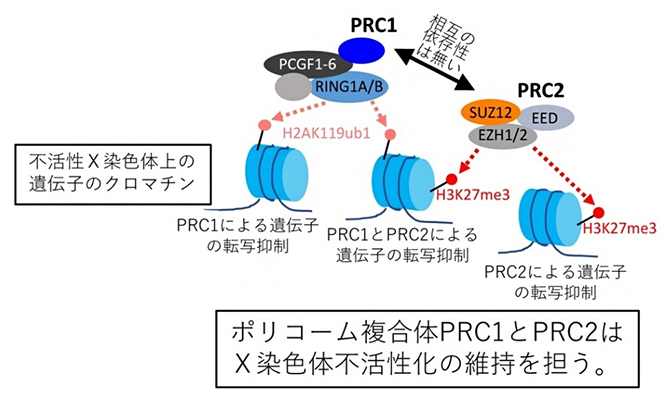医療介入により眠っている隠れた細菌を呼び起こすことができることを示すマウスを用いた研究 Study in mice indicates medical interventions can awaken dormant, hidden bacteria
2023-01-11 ワシントン大学セントルイス

The opportunistic bacterium Acinetobacter (above) rarely sickens healthy people but causes serious infections in hospitalized patients. A study, in mice, from Washington University School of Medicine in St. Louis suggests that Acinetobacter can hide undetected in bladder cells and then reactivate when stimulated by medical intervention. The findings suggest that patients may bring Acinetobacter into hospitals and that screening patients could supplement current infection-control efforts. (Image: Centers for Disease Control)
セントルイスのワシントン大学医学部の研究者たちは、こうした細菌の意外な発生源、すなわち入院患者自身であることを示す証拠を発見した。研究者たちはマウスを使い、カテーテルと呼ばれる滅菌チューブを尿路に挿入すると、たとえ膀胱からバクテリアが検出されなくても、尿路感染症(UTI)が発生することを発見したのである。このような管は、病院で手術を受ける人の膀胱を空にするためによく使用されている。このマウスでは、チューブを挿入すると、膀胱の細胞に潜んでいたアシネトバクター・バウマニ(A. baumannii)菌が活性化し、出現・増殖して尿路結石を引き起こすきっかけとなった、と研究チームは述べている。
この研究結果は、1月11日付のScience Translational Medicine誌に掲載され、危険な細菌の隠れ家がないか患者をスクリーニングすることで、感染管理活動を補完し、致命的な感染症を予防することができると示唆された。
フェルドマンは、分子微生物学のHelen L. Stoever教授で尿路結石の専門家である共同研究者Scott J. Hultgrenと共同で、カテーテルを挿入した後になぜ多くのバウマンニ尿路結石が発生するかを調査した。
健康な人の尿路結石のほとんどは、大腸菌(Escherichia coli)によって引き起こされます。大腸菌は、尿路結石が治ったように見えても、何カ月も膀胱の細胞内に潜伏し、再び感染症を引き起こすことが研究で明らかになっている。
フェルドマンとハルトグレン、そして筆頭著者である大学院生のジェニー・E・ヘイゼン、分子微生物学講師のジゼラ・ディ・ベナンツィオは、A. baumanniiが大腸菌のように細胞の中に潜伏できるかどうかを調査した。彼らは、A. baumanniiによって尿路結石を発症したマウスを研究しました。人間と同様、健康なマウスはA. baumanniiを撃退できるため、免疫系が弱っているマウスを使用した。
感染症が治まり、2ヵ月間マウスの尿から細菌が検出されなくなった後、研究者たちは無菌状態でマウスの尿路にカテーテルを挿入した。すると、24時間以内に約半数のマウスが、最初の感染と同じ株のA. baumanniiによる尿路結石を発症したのである。
「カテーテルを入れるまで、細菌はずっと膀胱の細胞内に潜んでいたのでしょう」とHultgrenは言った。「カテーテル挿入により炎症が引き起こされ、炎症によりリザーバーが活性化し、感染症が開花するのです」。
A. baumanniiは、健康な人にほとんど症状を起こさないので、この細菌を持っている多くの人は、自分が感染していることに気づかないかもしれないと、研究者達は言っています。この研究の一環として、研究者達は、科学文献を検索し、健康な人の約2%が、尿中にA. baumanniiを保有していることを発見しました。
<関連情報>
- https://source.wustl.edu/2023/01/some-hospitalized-patients-infections-may-develop-from-their-own-bacteria/
- https://medicine.wustl.edu/news/some-patients-hospital-acquired-infections-may-develop-from-their-own-bacteria/
- https://www.science.org/doi/10.1126/scitranslmed.abn8134
マウスのカテーテル挿入がAcinetobacter baumanniiの膀胱リザーバーを播種した尿路感染症の再発を誘発する Catheterization of mice triggers resurgent urinary tract infection seeded by a bladder reservoir of Acinetobacter baumannii
Jennie E. Hazen,Gisela Di Venanzio,Scott J. Hultgren,Mario F. Feldman
Science Translational Medicine Published:11 Jan 2023
DOI: 10.1126/scitranslmed.abn8134
Abstract
The antibiotic-resistant bacterium Acinetobacter baumannii is a leading cause of hospital-associated infections. Despite surveillance and infection control efforts, new A. baumannii strains are regularly isolated from health care facilities worldwide. In a mouse model of urinary tract infection, we found that mice infected with A. baumannii displayed high bacterial burdens in urine for several weeks. Two months after the resolution of A. baumannii infection, inserting a catheter into the bladder of mice with resolved infection led to the resurgence of a same-strain urinary tract infection in ~53% of the mice within 24 hours. We identified intracellular A. baumannii bacteria in the bladder epithelial cells of mice with resolved infection, which we propose could act as a host reservoir that was activated upon insertion of a catheter, leading to a resurgent secondary infection.
Hiding in plain sight
The Gram-negative bacterium Acinetobacter baumannii is a common cause of hospital-acquired infections, and infected patients may be a potential source of this pathogen. Using a mouse model of catheter-associated urinary tract infection, Hazen et al. now report that 50% of mice previously infected with A. baumannii exhibited a urinary tract infection caused by the same strain of this pathogen after catheter insertion. The authors propose that small clusters of intracellular A. baumannii observed in the bladders of mice with resolved infection could act as a bacterial reservoir capable of triggering a secondary infection after catheterization. —OMS


